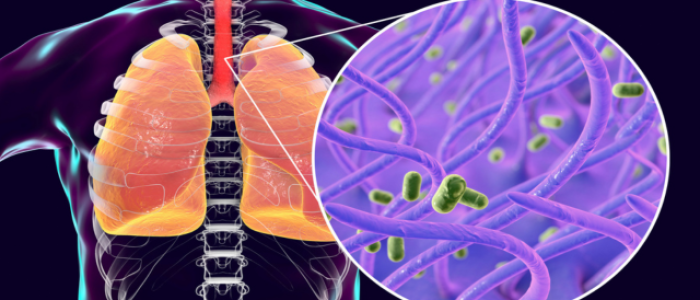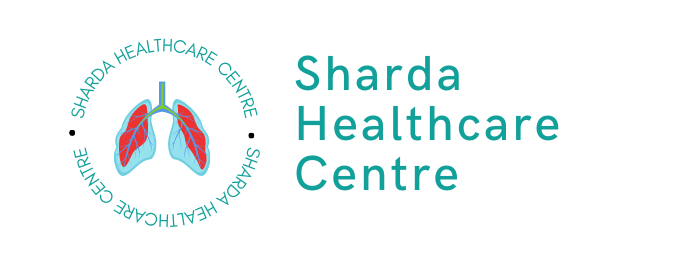
Understanding Lung Infection: Symptoms, Causes, and Treatments
Lung infections, also known as pulmonary infections, can range from mild to severe. They occur when viruses, bacteria, or fungi enter the lungs and cause inflammation and irritation. Lung infections like pneumonia, bronchitis, and tuberculosis are common illnesses that affect millions of people each year. Recognizing the symptoms, understanding what causes lung infections, and getting proper medical treatment can help you recover more quickly.
What Are the Symptoms of a Lung Infection?
The symptoms of lung infections can vary depending on the type of infection. However, some common signs to watch for include:
- Coughing – A cough is often one of the first symptoms and may produce mucus or phlegm. The cough may get worse with activity.
- Fatigue – Feeling very tired is common, as infections sap your energy.
- Fever – Many lung infections cause a fever, which signals your body is fighting the infection.
- Chills – Shaking chills are often accompanied by a fever.
- Shortness of breath – Difficulty breathing can occur, especially during activity.
- Wheezing – High-pitched wheezing or whistling sounds when breathing.
- Chest pain – A dull, aching pain in the chest may develop.
- Loss of appetite – Having little interest in food is common when you’re sick.
- Sweating – Heavy sweating may occur with a fever or chills.
- Headaches – Many infections cause severe headaches.
What Causes Lung Infections?
Lung infections have a variety of possible causes, including:
- Viruses – Influenza (the flu) is a very common viral lung infection. Other viruses like measles, chickenpox, respiratory syncytial virus (RSV), and the common cold can also lead to lung infections. Viruses damage the cells along the airways and lungs, allowing bacteria to take hold.
- Bacteria – Bacterial pneumonia is a serious illness often requiring hospitalization. Bacteria like Streptococcus pneumoniae and Haemophilus influenzae infect the air sacs in the lungs, causing them to fill with fluid. Tuberculosis is another dangerous bacterial lung infection.
- Fungi – Fungi are also responsible for some lung infections, especially among people with weakened immune systems. Fungal pneumonia is most often caused by aspergillus, histoplasma, coccidioidomycosis, and Pneumocystis jirovecii.
- Mycoplasma – Mycoplasma pneumonia usually causes milder symptoms than other bacterial pneumonias. It spreads easily through contact with infected people.
- Medical procedures – People can sometimes develop lung infections after being on a ventilator in the hospital, having inhaled foreign material, or undergoing lung surgery.
- Smoking – Long-term smoking damages lungs’ natural defenses, making people more prone to chronic lung infections like bronchitis or COPD flare-ups.
- Weak immune system – Those with weaker immune systems due to HIV/AIDS, cancer treatment, autoimmune disorders, or organ transplants are at higher risk of severe lung infections.
- Respiratory viruses – Colds, flu, RSV, and other viruses that attack the respiratory system often pave the way for secondary bacterial infections.
Treating Lung Infections
Treatment for lung infections involves caring for symptoms and addressing the underlying cause. Here are some common treatments:
- Rest – Getting extra rest allows your body to devote energy towards fighting the lung infection. Avoid strenuous activity until you recover.
- Medications – Antibiotics are used for bacterial lung infections while antifungal medicines treat fungal infections. Bronchodilators open airways while cough medicines provide relief.
- IV fluids – Dehydration is common with lung infections. You may need intravenous fluids at the hospital to stabilize fluid levels.
- Oxygen therapy – Extra oxygen is often given through a nasal cannula or mask to improve oxygenation.
- Breathing treatments – Nebulizer breathing treatments can deliver medicines straight to the lungs to reduce wheezing and help you breathe easier.
- Surgery – Surgery may be required to remove infected lung tissue or drain abscesses depending on the severity of infection.
- Lifestyle changes – Smoking cessation, a healthy diet, and stress reduction help prevent chronic lung infections.
How Long Do Lung Infections Last?
The recovery time for a lung infection varies based on the cause. Here are some estimates for common lung infections:
- Common cold: 1-2 weeks
- Acute bronchitis: About 3 weeks
- Bacterial pneumonia: Around 1-3 weeks with antibiotics
- Mycoplasma pneumonia: 3 weeks to 2 months
- Influenza: 1-2 weeks
- Tuberculosis: Months to years if untreated

Most viral infections run their course in 1-3 weeks. Bacterial lung infections also clear within several weeks if treated, while more resistant infections like TB can persist for months without antibiotics.
Even after your main symptoms go away, a lingering cough is very common and can last for weeks. Be patient, get lots of rest, and talk with your doctor if symptoms persist. Contact them immediately if you experience any worsening.
Preventing Lung Infections
You can take these steps to lower your risks of lung infections:
- Get vaccinated – Immunizations protect against bacterial and viral lung infections.
- Wash hands – Thoroughly wash hands with soap and water frequently.
- Take vitamins – Vitamin C, vitamin D, zinc, and magnesium support immunity.
- Exercise – Stay active to keep lungs and immune system healthy.
- Drink water – Stay well hydrated, especially during illness.
- Don’t smoke – Avoid all tobacco products.
- Avoid pollutants – Limit exposure to air pollution when possible.
- Treat underlying conditions – Manage COPD, asthma, cancer or autoimmune disorders.
- Sleep well – Aim for 7-8 hours per night to strengthen immunity.
Conclusion:
Lung infections can arise from a variety of causes and range in severity from mild to life-threatening. Pay attention to common symptoms like coughing, fever, chills, and trouble breathing. Seek medical care promptly at the onset of symptoms to determine if you’re dealing with a virus, bacteria, or fungus so appropriate treatment can begin right away. With proper rest and targeted medicines, most lung infections can be overcome within a few weeks. Do your part to keep lungs healthy by quitting smoking, avoiding pollutants, managing any underlying medical conditions, and getting immunized. Keeping your immune system strong will help you avoid debilitating lung infections and recover more smoothly if one does occur. Stay vigilant about your respiratory health.
